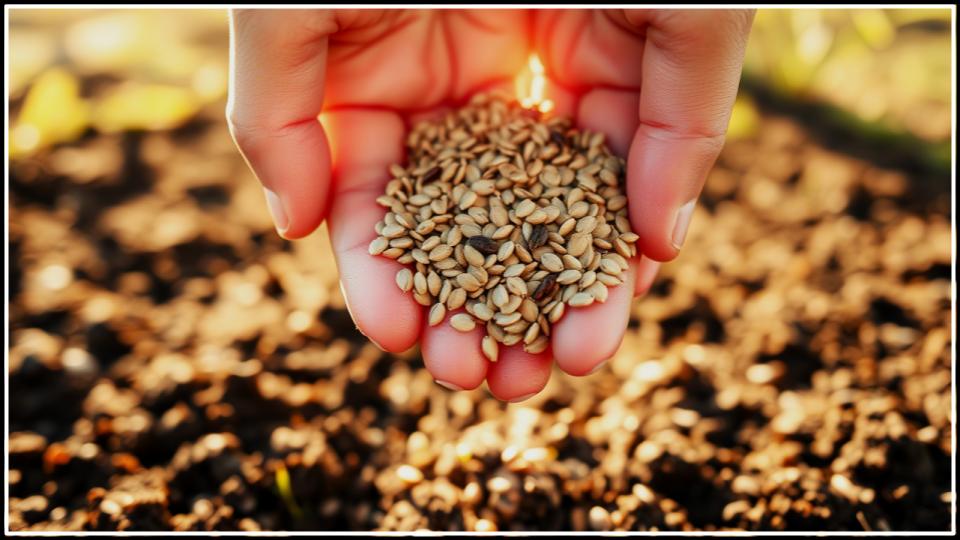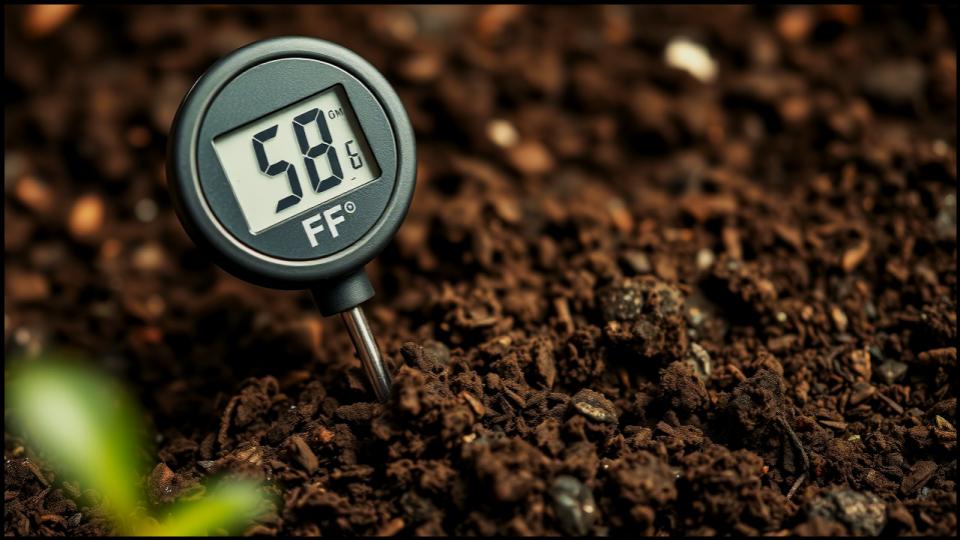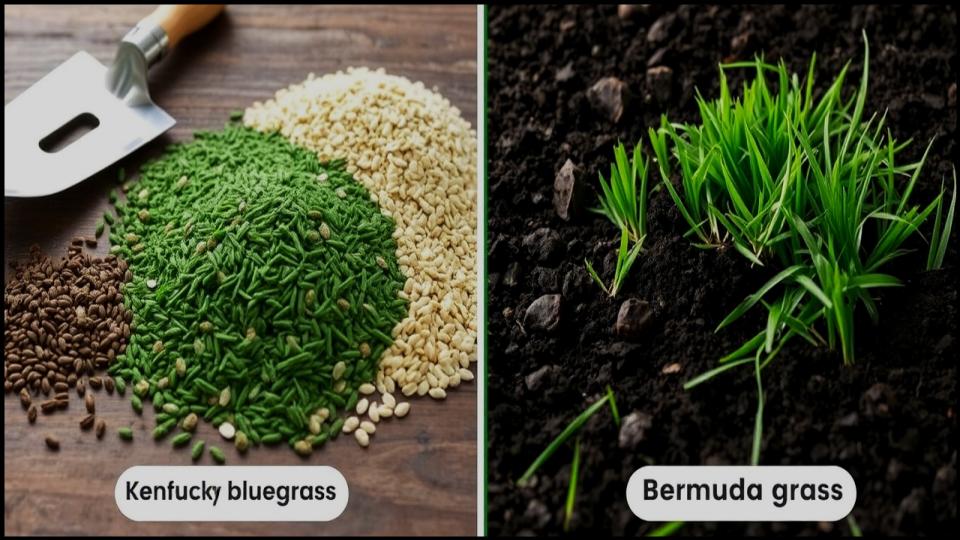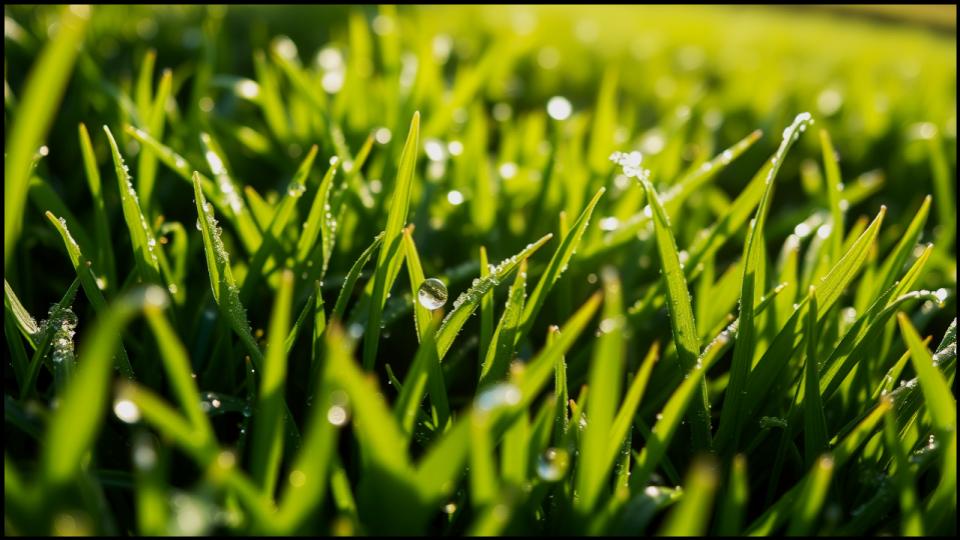
The air in spring carries a unique sense of promise, doesn’t it? The chill recedes, the days lengthen, and a universal desire to cultivate and beautify our outdoor spaces takes hold. For many of us, that dream begins with the simple, potent vision of a lush, green lawn—a verdant carpet for bare feet, family picnics, and quiet morning coffees. But achieving that dream hinges on a crucial factor that even the most enthusiastic gardener can get wrong: timing. Knowing exactly when to plant grass seed in spring is the single most important decision you’ll make, separating a thriving, resilient lawn from a patchy, weed-filled struggle.
In this guide, we’ll walk through the secrets to perfect timing, from reading Mother Nature’s subtle cues to understanding the science of the soil. You’ll learn not just when to plant, but how to give your new grass the absolute best start for a beautiful season ahead.
Key Takeaways for Spring Seeding
Here’s the blueprint for a successful spring lawn:
- Follow the Soil, Not the Calendar: The most critical factor is soil temperature. Wait until it is consistently between 50°F and 65°F.
- Choose a Cool-Season Champion: Spring seeding is most successful with cool-season grasses like fescues, ryegrass, and Kentucky bluegrass, which thrive in moderate temperatures.
- Preparation is Paramount: A beautiful lawn doesn’t grow from casually tossed seed. Proper soil preparation ensures the essential seed-to-soil contact for germination.
- Water is Your New Best Friend: Consistent, light watering is non-negotiable for the first few weeks to keep the delicate new seeds and sprouts alive.
The Allure and Challenge of Spring Seeding
There’s an undeniable logic to sowing grass seed in the spring. The ground is soft and workable, rain is often plentiful, and the satisfaction of seeing those first green shoots emerge feels perfectly in sync with the season of renewal. However, as a horticulturist, I always advise gardeners to approach spring seeding with a clear understanding of its unique challenges.
Your new grass will face two primary adversaries: aggressive summer weeds and intense summer heat. Weeds like crabgrass germinate under the very same conditions that your grass seed loves. Furthermore, a young lawn that hasn’t had months to develop a deep, resilient root system can struggle when the first heatwave of July arrives.
Don’t let this discourage you! A successful spring planting is entirely achievable—it just requires thoughtful timing and diligent care to help your turf triumph.
The Gardener’s Calendar: Finding the Best Time to Plant Grass
Forget circling a date on your calendar based on a holiday weekend. The best time to plant grass is dictated by the environment, not our schedules. Your primary indicator is, without a doubt, soil temperature.

The Magic Number: Soil Temperature
Grass seed lies dormant until the soil provides the warmth it needs to awaken. For the cool-season grasses you’ll be planting in spring, the ideal soil temperature for germination is consistently between 50°F and 65°F (10°C to 18°C). Notice the word consistently. A single warm day won’t do; you want daytime temperatures to be steadily in the 60s and 70s to bring the soil up to this range. According to the University of New Hampshire Extension, planting too early in cold, wet soil can lead to seed rot and poor germination.
You can easily measure this with a simple soil thermometer, an inexpensive and invaluable tool for any serious gardener. Take readings for a few consecutive days in the morning and afternoon to ensure the temperature is stable.
Reading Mother Nature’s Cues
Long before we had thermometers, gardeners relied on phenology—the practice of observing nature’s cycles—to time their plantings. In my own garden, I find these ancient cues are still remarkably reliable.
- Watch the Lilacs: A classic piece of garden wisdom holds that when the lilac bushes begin to bloom, the soil is warm enough for planting.
- Look for Forsythia: The bright yellow burst of a forsythia in full bloom often signals that soil temperatures are approaching the 50°F mark, making it a good indicator that your seeding window is opening.
Choosing Your Champion: Selecting the Right Grass Seed
Walking into a garden center can present you with a bewildering wall of grass seed options. Success starts with choosing the right type for your climate and needs.
Cool-Season vs. Warm-Season Grasses
The United States is broadly divided into grass-growing regions. Spring is the prime time for seeding cool-season grasses, which are best suited for the northern two-thirds of the country. These varieties, as detailed by the University of Minnesota Extension, have their most vigorous growth periods in the moderate temperatures of spring and fall.

- Festuca (Fescues): Excellent for their drought and shade tolerance. Fine fescues are soft and low-maintenance, while Tall Fescue is known for its durability.
- Lolium perenne (Perennial Ryegrass): Germinates very quickly, making it a wonderful nurse grass in mixes to provide fast color and stability.
- Poa pratensis (Kentucky Bluegrass): This is the classic, beautiful American lawn grass. It has a rich color and spreads to fill in bare spots, but it can be slower to establish.
In the southern U.S., warm-season grasses like Zoysia, Bermuda, and St. Augustine are the norm. These grasses are best planted in the late spring or early summer when soil temperatures are consistently above 70°F.
Tools And Materials Box
Get Ready to Sow: Your Project Checklist
- High-Quality Grass Seed: Choose a variety suited to your climate and sun exposure.
- Garden Rake: For loosening soil and removing debris.
- Topsoil or High-Quality Compost: A thin layer provides nutrients and improves seed contact.
- Lawn Spreader: A broadcast (rotary) spreader is best for large, open areas, while a drop spreader offers precision near garden beds.
- Sprinkler or Hose with a Gentle Spray Nozzle: For consistent, delicate watering.
- Soil Thermometer: To ensure you’re planting at the perfect moment.
- Starter Fertilizer: Look for one formulated for new lawns, which is high in phosphorus for root development.
The Step-by-Step Guide to Perfect Spring Seeding
With your timing perfected and your materials gathered, it’s time to get to work. Following these steps methodically will give you professional-grade results.
- Prepare the Ground: This is the most labor-intensive part, but it’s critical. Vigorously rake the entire area to remove any thatch (the layer of dead grass), stones, and other debris. Your goal is to loosen the top quarter-inch of soil to create a welcoming bed for the seeds. For heavily compacted soil, consider renting an aerator.
- Amend and Level: Spread a thin, quarter-inch layer of high-quality compost or topsoil over the area. This isn’t about raising the lawn’s height; it’s about providing easily accessible nutrients and ensuring excellent seed-to-soil contact, which is vital for germination. Rake the surface smooth, filling in any low spots.
- Calibrate Your Spreader: A common mistake I see is improper spreader settings, which leads to uneven, patchy growth. Read the instructions on your seed bag carefully. My go-to method is to set the spreader to half the recommended rate and make two passes over the lawn in a perpendicular pattern (like a checkerboard). This technique virtually guarantees even coverage.
- Sow the Seed: Walk at a steady, consistent pace as you apply the seed. Avoid seeding on windy days, as the tiny seeds can easily blow into your flower beds or onto the driveway.
- Ensure Good Contact: Once the seed is down, lightly rake the area one last time so that most of the seed is covered by a dusting of soil—no more than a quarter-inch deep. This protects it from birds and helps it stay moist. For larger areas, you can use a lawn roller (filled only halfway with water) to gently press the seed into the soil.
The First Few Weeks: Essential New Lawn Care
You’ve done the hard work, but the next few weeks are when your diligence truly pays off. This is where new lawn care becomes an art.
The Golden Rule of Watering
Your single most important job after seeding is to keep the soil surface consistently moist. The top inch of soil where the seeds are must not dry out.
- Water Lightly and Frequently: Instead of one deep soaking, plan for two to three short watering sessions per day (perhaps 10-15 minutes each). A light mist or gentle shower setting is perfect.
- Adjust for Weather: On hot or windy days, you may need an extra watering session. On cool, cloudy days, you might only need one.
The First Mow
The sight of your first mow is a major milestone! Resist the urge to cut it too soon.
- Wait for Height: Let the new grass blades reach at least 3 to 4 inches tall before you even think about mowing.
- Mow High and Sharp: For that first mow, set your mower to its highest setting. A sharp blade is crucial—a dull blade will rip and pull at the new seedlings, damaging their fragile root systems. As a rule, never remove more than one-third of the grass blade in a single mowing.

A Foundation for a Beautiful Season
Planting a lawn in the spring is an act of optimism. It’s a partnership with the season, a belief in the beauty that a little effort and knowledge can create. By respecting the soil’s warmth, choosing your seed with care, preparing your canvas, and nurturing those first tender shoots, you are not just planting grass—you are laying the foundation for a season of outdoor joy. Now that you know exactly when to plant grass seed in spring, you are ready to turn that vision of a lush, green lawn into a stunning reality.
Read More
How to Make Your Dipladenia Bloom Like Crazy—Even in Cooler Climates
